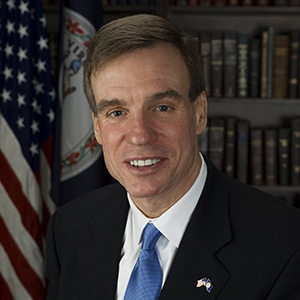When you meet someone new these days, the first question is no longer, “Where do you work?” The more appropriate question is, “What are you working on?”
Mark R. Warner is the senior United States senator from Virginia.

That’s because the United States workforce is increasingly composed of freelancers, independent contractors, and the otherwise self-employed. Online platforms like Airbnb, Uber, TaskRabbit, Etsy, and many others provide broad reach in matching supply and demand for products and services that people never thought about monetizing before: a room, a ride, a specific skill. Whether by economic necessity or by choice, a growing number of Americans are piecing together two, three, or more of these economic opportunities simultaneously to make a living as part of the gig economy.
Yet Washington, D.C., has mostly remained on the sidelines as the economy, workforce, and workplace have undergone perhaps the most dramatic transformations in decades. For much of the past year, I’ve been drilling down on these issues, speaking with hundreds of gig workers as well as many of the CEOs of these gig economy platforms, to figure out how federal policymakers can help make this new economy work better for more people.
I’ve discovered the on-demand economy is attracting not just those who are starting out, or starting over. It’s an easy and appealing way for millions of Americans to supplement their incomes or retirements by taking advantage of the freedom and flexibility of on-demand activities.
One of the biggest challenges for Washington may be the increasing changes in the traditional employer/employee relationship. The old, binary choices of the 20th century—you’re either an employee or a contractor—no longer apply. We have to look at new options for providing some level of security—such as unemployment insurance, coverage for injury or disability, retirement planning, and more—for those workers no longer connected to a traditional full-time employer. It need not be a top-down, government-run program, and we should discuss whether safety net protections for contingent workers should be opt-in or opt-out.
We could look to the health-care exchanges as one public-private model. Perhaps we might borrow the idea of the Hour Bank, used by the building trades for 60 years to administer benefits for members who work for a series of contractors. Another model has been developed by the Freelancers Union, a non-profit association that provides resources and low-cost services like health care and retirement plans to 300,000 members.
Part of the solution could even be consumer-driven. Millennials typically say they want to work for, and buy from, companies that treat their workers well. What if the bill for ride-sharing or an Airbnb reservation included an option for the customer to contribute, along with a matching contribution from the platform host, to an independent fund providing at least some of these social benefits? A voluntary, consumer-driven system could provide one piece of a broader solution. There are other public-private models that deserve a look too.
And while litigation is underway about whether on-demand workers are independent contractors or employees, this is too important to leave to the courts alone. We need to think about standards that will apply across all 50 states. As policymakers, we must acknowledge that our 20th-century definitions no longer work in a 21st-century economy.
The federal government also needs to get up to speed with these changes. We need better data about how many people are part of the gig and sharing economies. Estimates range from a low of around three million to a high of around 53 million. Regardless of the number, we know this is an area of our economy that will continue to grow, and better data would help drive more effective policy.
In addition, the opportunity of the on-demand economy cannot only work in places like San Francisco or New York. It also needs to work for people in Washington’s Anacostia community, and for people who live in former factory towns like Danville, Virginia. That’s why it’s so important that we re-commit to extending broadband to underserved and unserved regions. You can’t be LinkedIn if you don’t have a high-speed Internet link.
We also cannot forget the opportunity costs of this generation’s nearly $1.3 trillion in combined student debt, because it is limiting possibilities for an entire generation. I’ve argued for common-sense policies to lower the cost of college, and make student debt more manageable for more people.
I’ve also pushed to make income-based re-payment the default option, giving young people more breathing room when they’re starting out. And while we currently only allow employers to help cover the cost of ongoing education training, I’ve proposed allowing employers to apply pre-tax wages to help employees, if they agree, with their existing student debt—which could be a great recruitment and retention tool.
Barely five years ago, no one had heard of Uber or Airbnb. And while we don’t know what the disruptive technologies of tomorrow might look like, we know developments such as driverless cars, same-day drone deliveries, and 3-D printing appear to be right around the corner. Instead of trying to make the new economy look more like the old, Washington should encourage these innovations, and work to create more opportunities and upward economic mobility for everybody.
These issues surrounding the 21st-century economy do not break-down in the typical Washington disconnect between right and left, or Democrat versus Republican. It’s more an issue of future versus past. This exciting convergence of economic, technological, and generational changes represents great challenges as well as great opportunity—and Washington needs to get off the sidelines, and work together to get it right.

For the Future of Work, a special project from the Center for Advanced Study in the Behavioral Sciences at Stanford University, business and labor leaders, social scientists, technology visionaries, activists, and journalists weigh in on the most consequential changes in the workplace, and what anxieties and possibilities they might produce.




